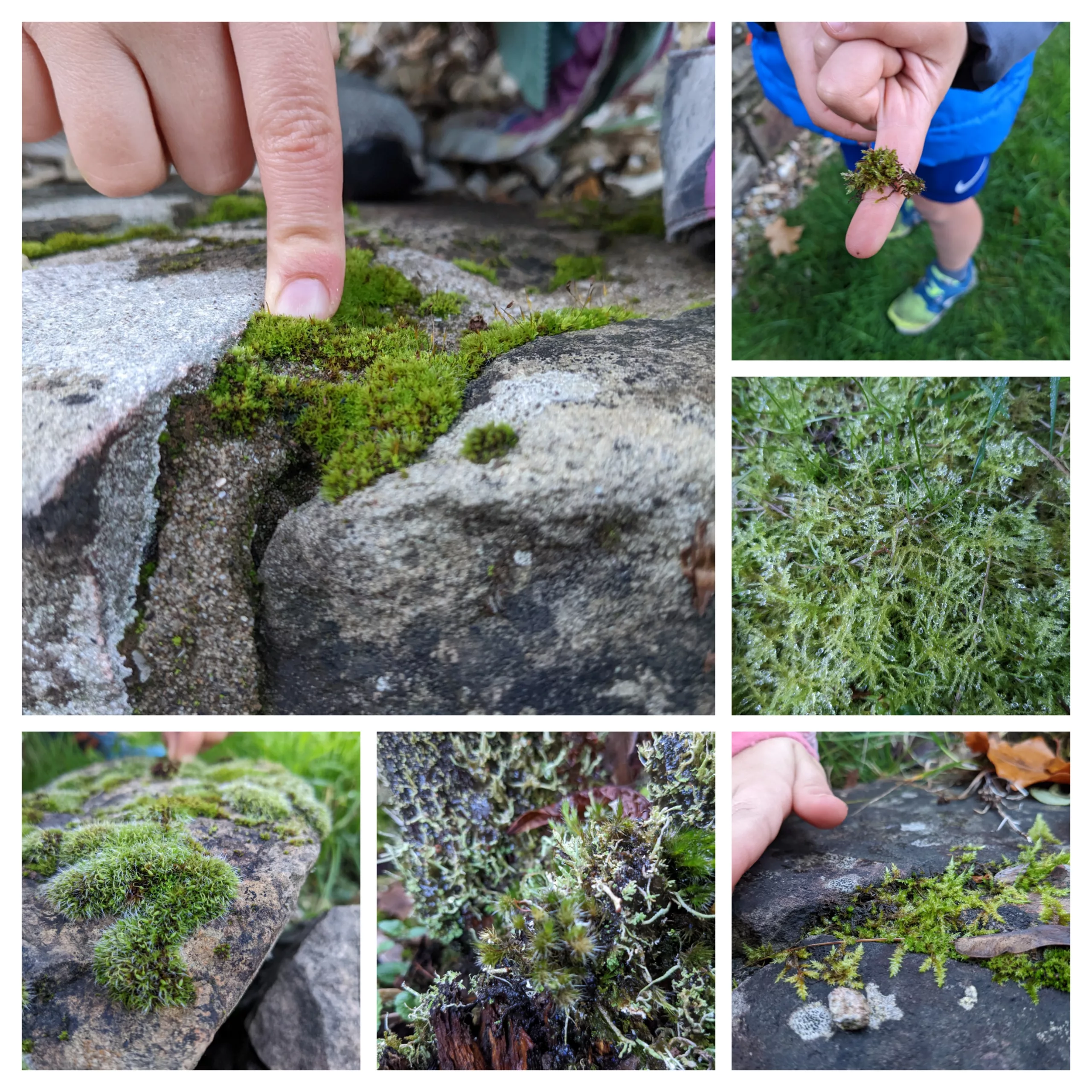
Alienation
My husband and I have an unusually large number of children (5 in a country where the average is about 1.9[i]). This is highlighted by the reaction people have when we meet them in the street. Rarely can I go out without at least somebody stopping to ask me:
”Are they all yours?”
We have also chosen to home-educate, which makes us even more unusual.
Being a home-educator of five children can be quite alienating at times. Not so much because of the response other people have to us (although sometimes I do wish we could just blend in and go unnoticed). But more, because I feel so limited in what I can do.
Being responsible for so much of the educational, social and general wellbeing of five children can be a bit overwhelming at times. It takes so much thought and energy, that I have little left over for socialising, or serving others and the church, in the ways I used to.
Whilst my situation is unique, I don’t believe that feeling alienated is unique. I may be wrong, but I think just about everyone feels a sense of alienation at times, a longing for something more. As if things aren’t quite as they ought to be.
In my Bible reading plan, I have just finished some of the books that describe what happened when the Israelites came back from exile.
The Israelites were taken captive by the Babylonians and, after around 70 years of exile, they were allowed to go back to their land and start to rebuild their city, Jerusalem. However when they got there, things were nothing like what they used to be. The temple had deteriorated. The city walls were destroyed. The houses were derelict. Though the people slowly began to rebuild, the former glory of the temple was never quite restored.
Not only that, but the people hadn’t changed. They still rebelled against God, just as they had before their time in exile. Though the people had come back to their land, somehow they still weren’t ‘home’. They still felt alienated and longed for something more. So they awaited the day when a new King would come and make things right again.
Much of the Bible deals with the human condition of feeling alienated and our longing for that perfect home that Adam and Eve once inhabited.[ii] A world without any estrangement from God or between people. A world without pain or corruption.
Every now and then, we get a sense of it. Like those moments when we see a beautiful sunset or when you hold a new-born baby. But they are just fleeting moments.
CS Lewis, the author of the Chronicles of Narnia, in his essay ‘The Weight of Glory’, describes moments like these as ‘the scent of a flower we have not yet found’ or ‘the echo of a tune we have not yet heard’.
One day Jesus will return, and with him the wholeness, for which we all have this inexplicable ache. Though we’ve never truly experienced it, and only ever had glimpses, we sense it is what we are meant for.
However, for now, we must walk the path Jesus set before us – trying to make this world a bit more hospitable for those who feel alienated – until we all reach our final destination.
Moss
Moss can look a bit strange and out of place, especially when it starts to grow on our lawn! However, it is quite a remarkable organism.
It can survive in extreme conditions, from deserts to damp caves. Though it has no roots, it often uses little hairs to cling to rocks and trees, and it acts like a sponge, soaking up moisture from rain or dew.
Moss also provides an important home for many insects and animals. It offers warmth for sheltering turtles, and nests for insects to lay their eggs and find food.
Last week, the children and I looked at moss together as part of our Friday nature studies.
We started by looking at the information in the ENWC curriculum.
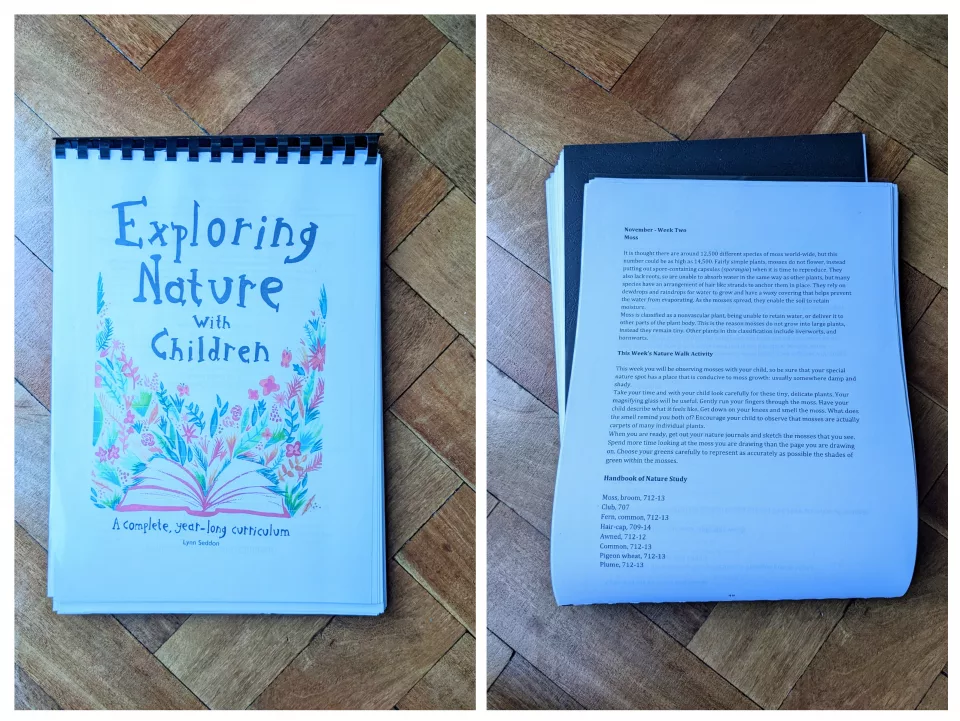
Then, the children read ‘Anansi and the Strange Moss Covered Rock’ together and, the younger ones, drew pictures in their nature journals.
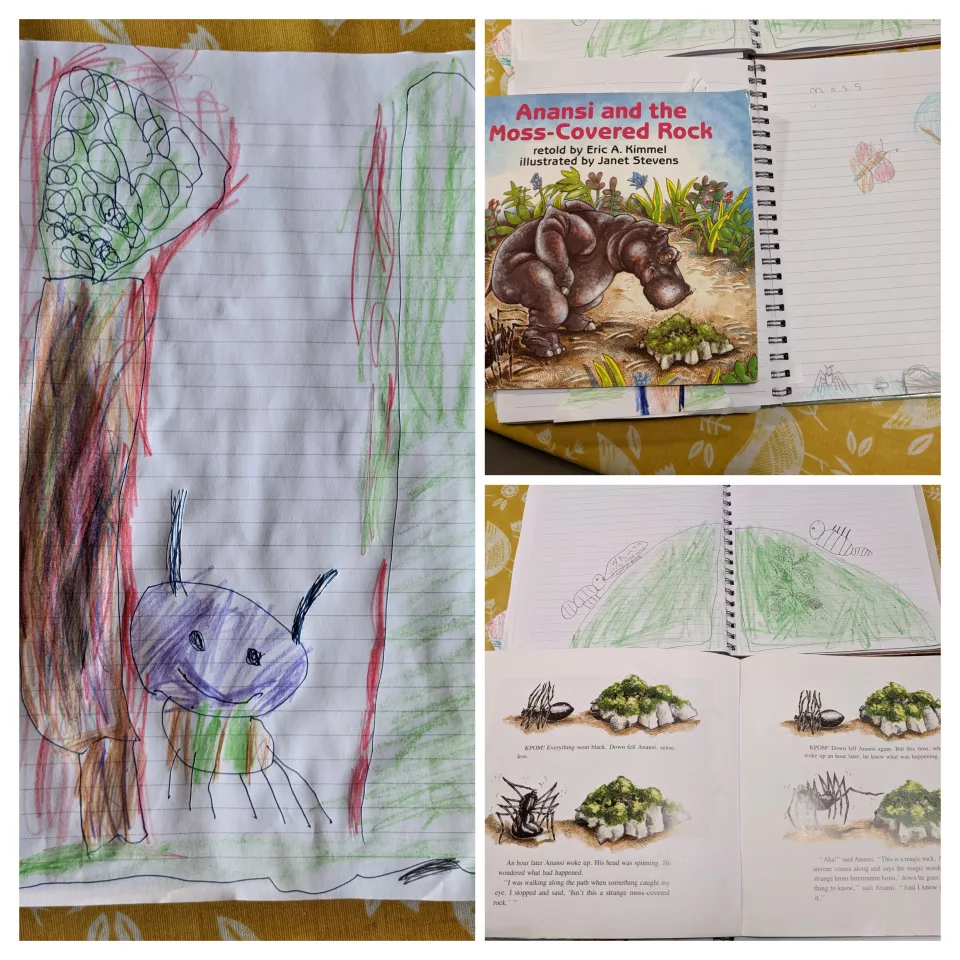
Later, we went out in our garden with our magnifying glasses to hunt for different types of moss.
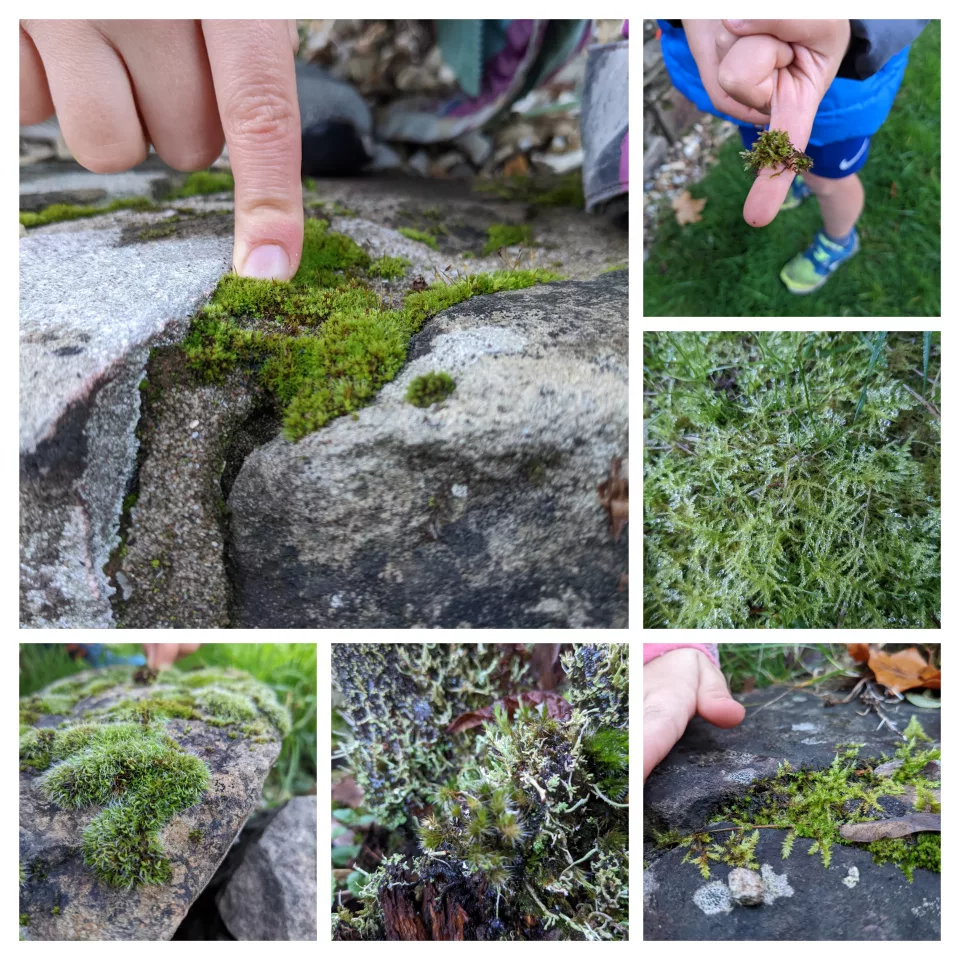
After we’d found a few different varieties and had a go at identifying them with these twinkl print outs…
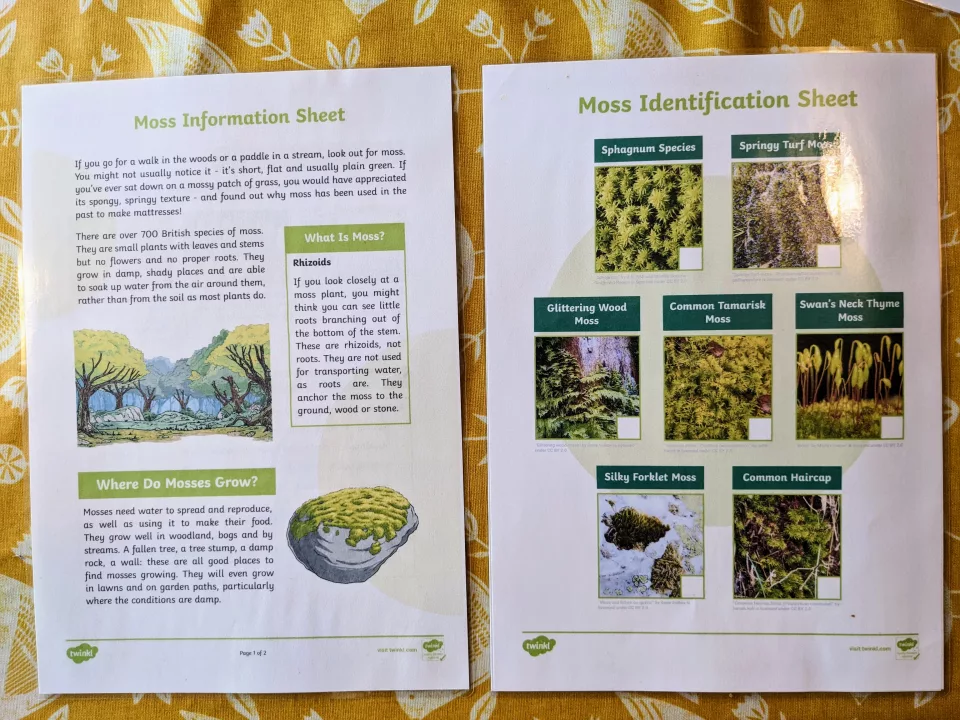
…we built a mossy terrarium together. Last year they made 5 small ones, but finding room in the house for that many terrariums was not easy. (We only have one of those left. But a year on, the moss has still survived!)
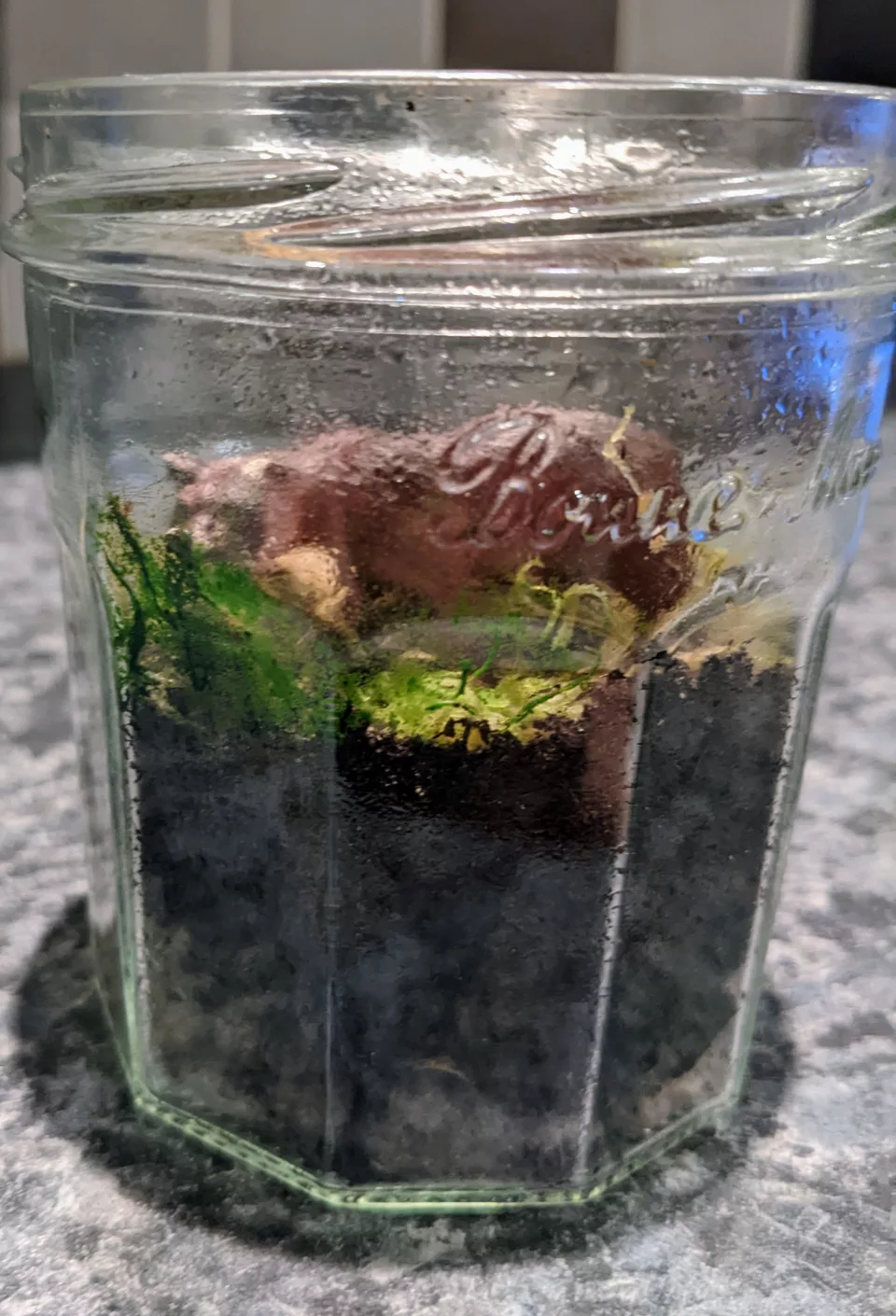
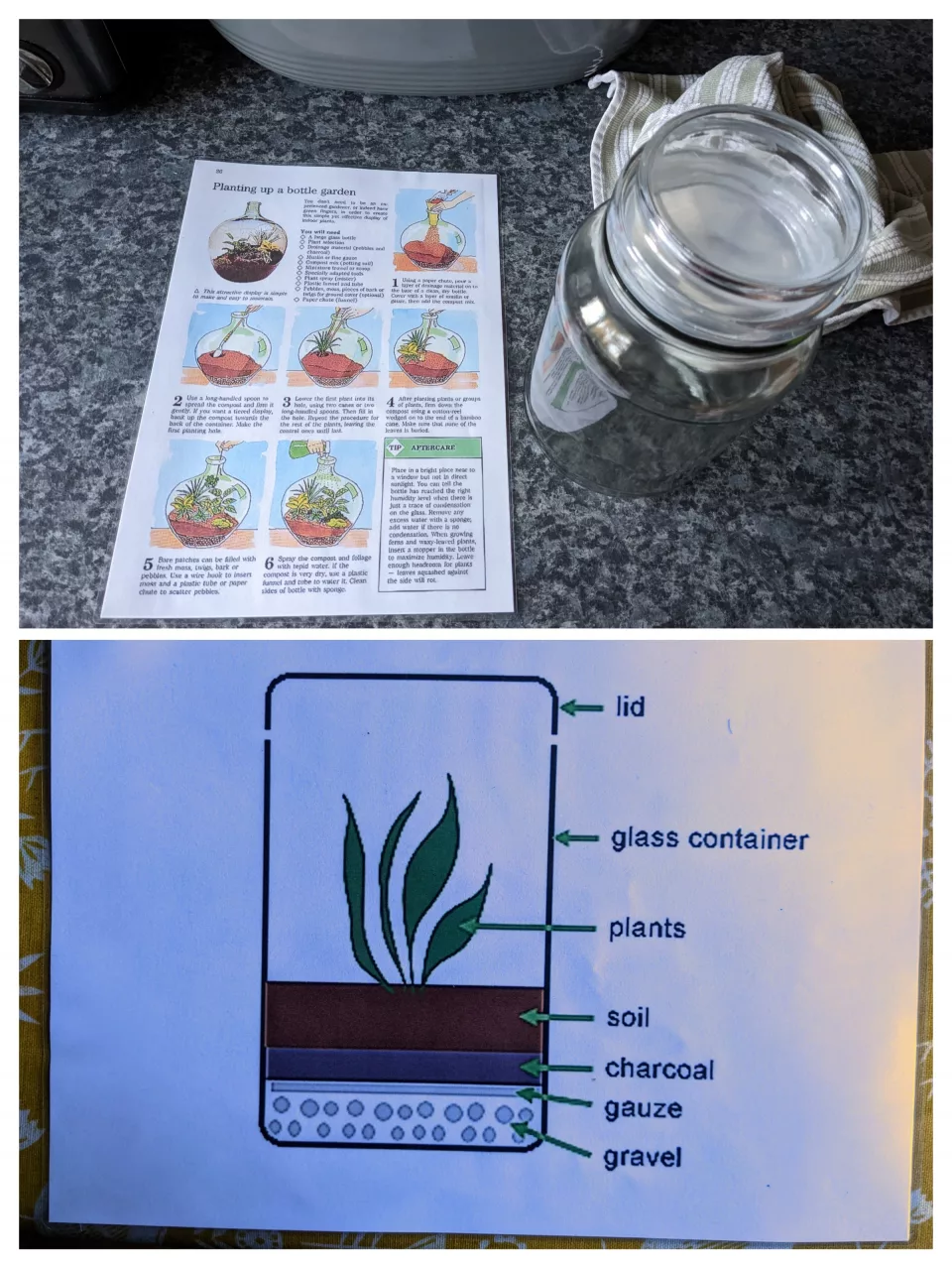
This year we made one big one, and have added some of the off-shoots from our tropical plants that we picked up from Alan’s Jungle Plants (when we were studying the rainforest).
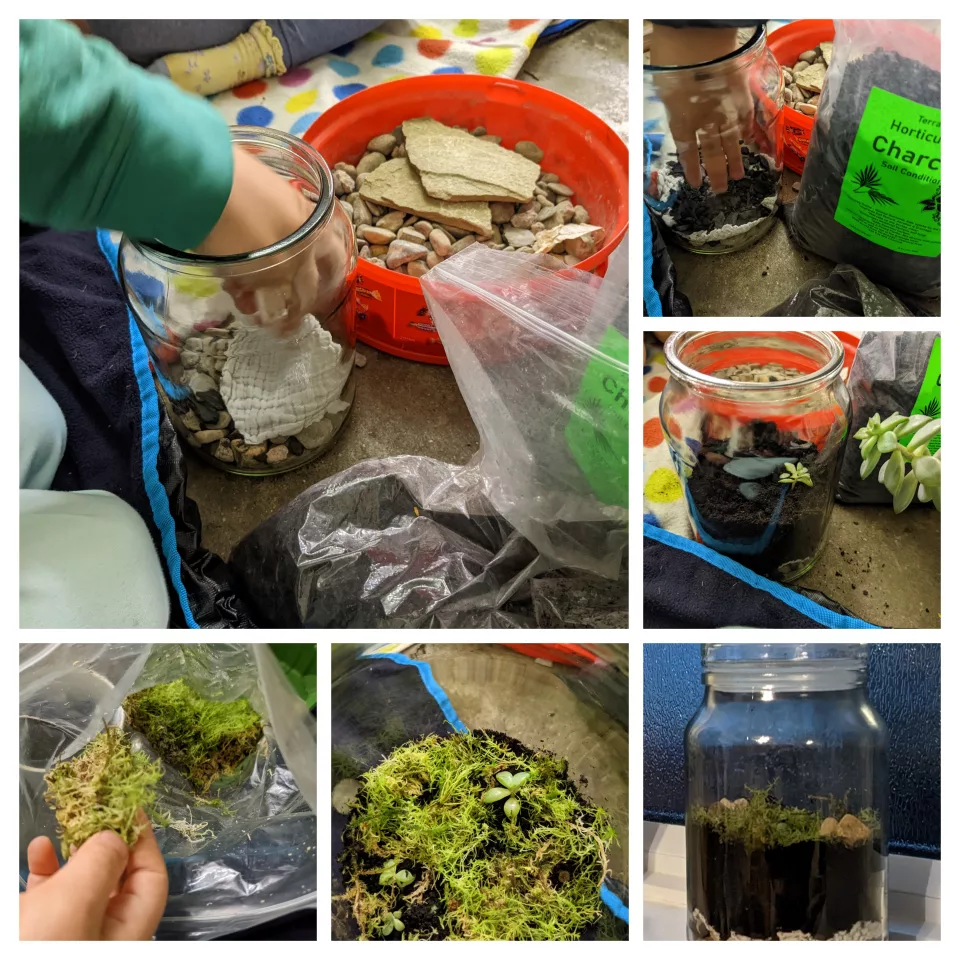
Next, we had a look at the poem and painting included in the curriculum.
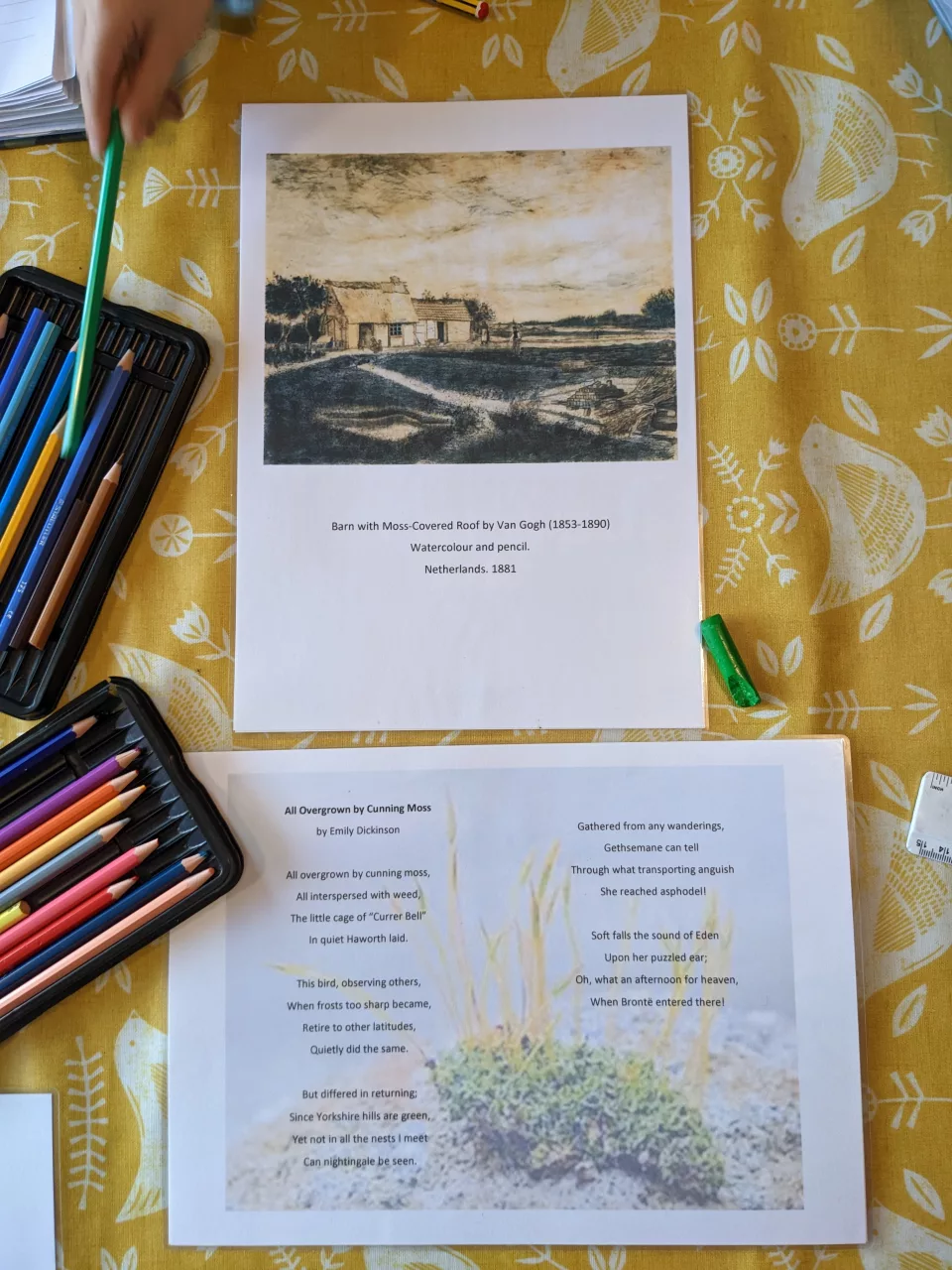
Finally, the children wanted to repeat last year’s craft, which helps them to see the effect of layering colours on top of one another. For this we used plain paper, some clear acetate sheets stapled on top, and Sharpies.
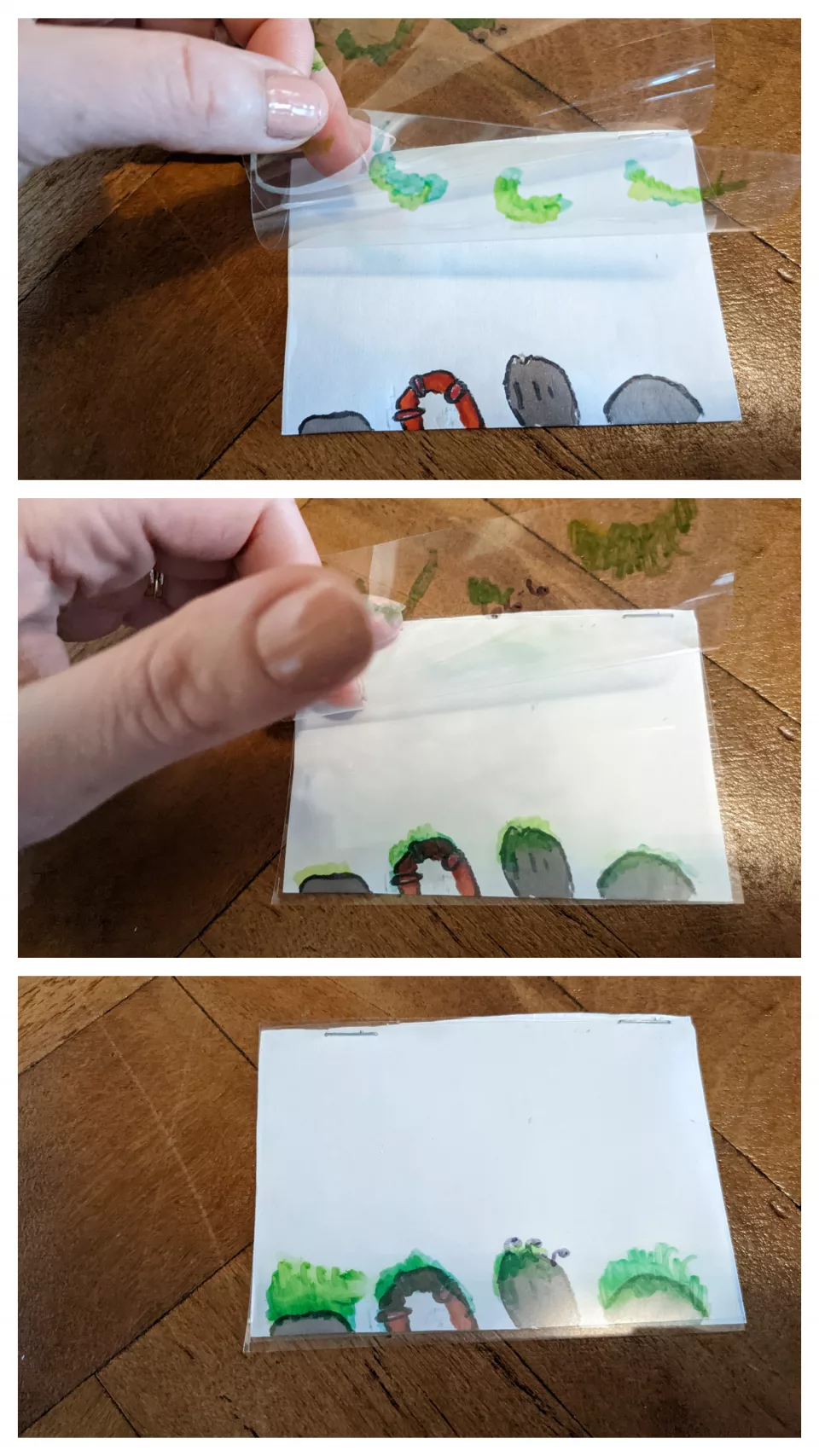
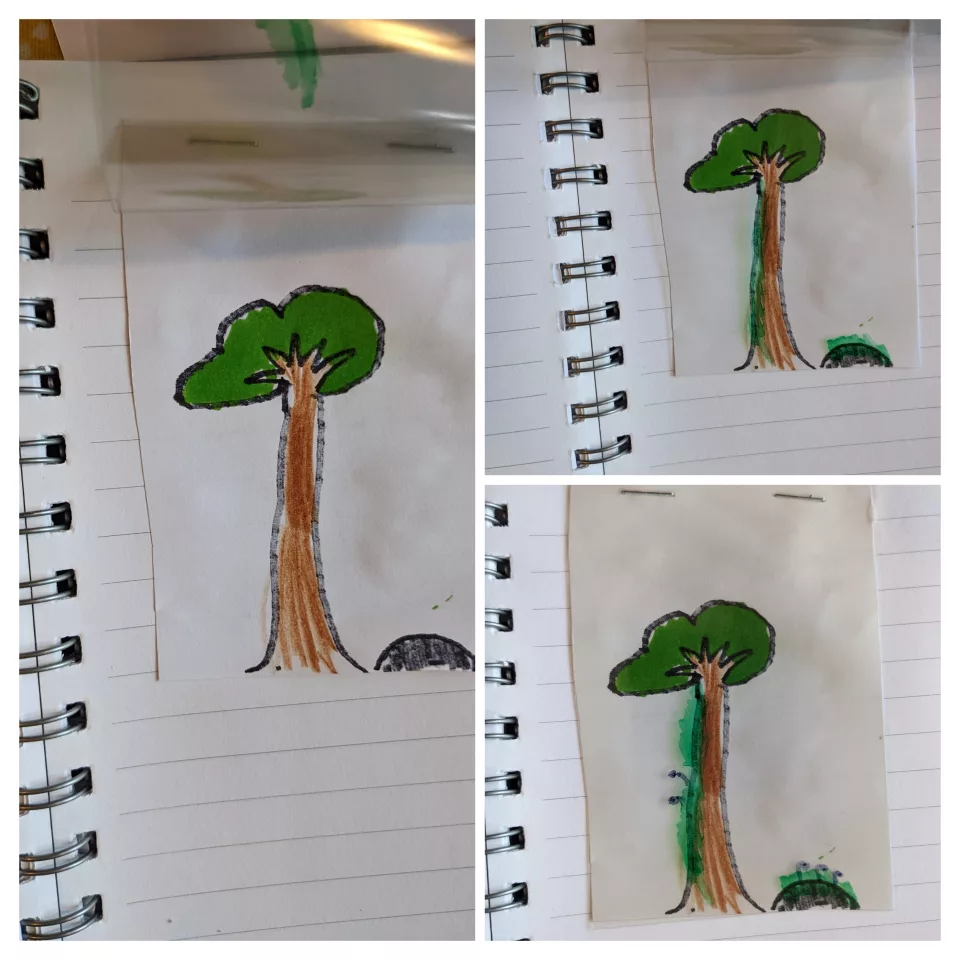
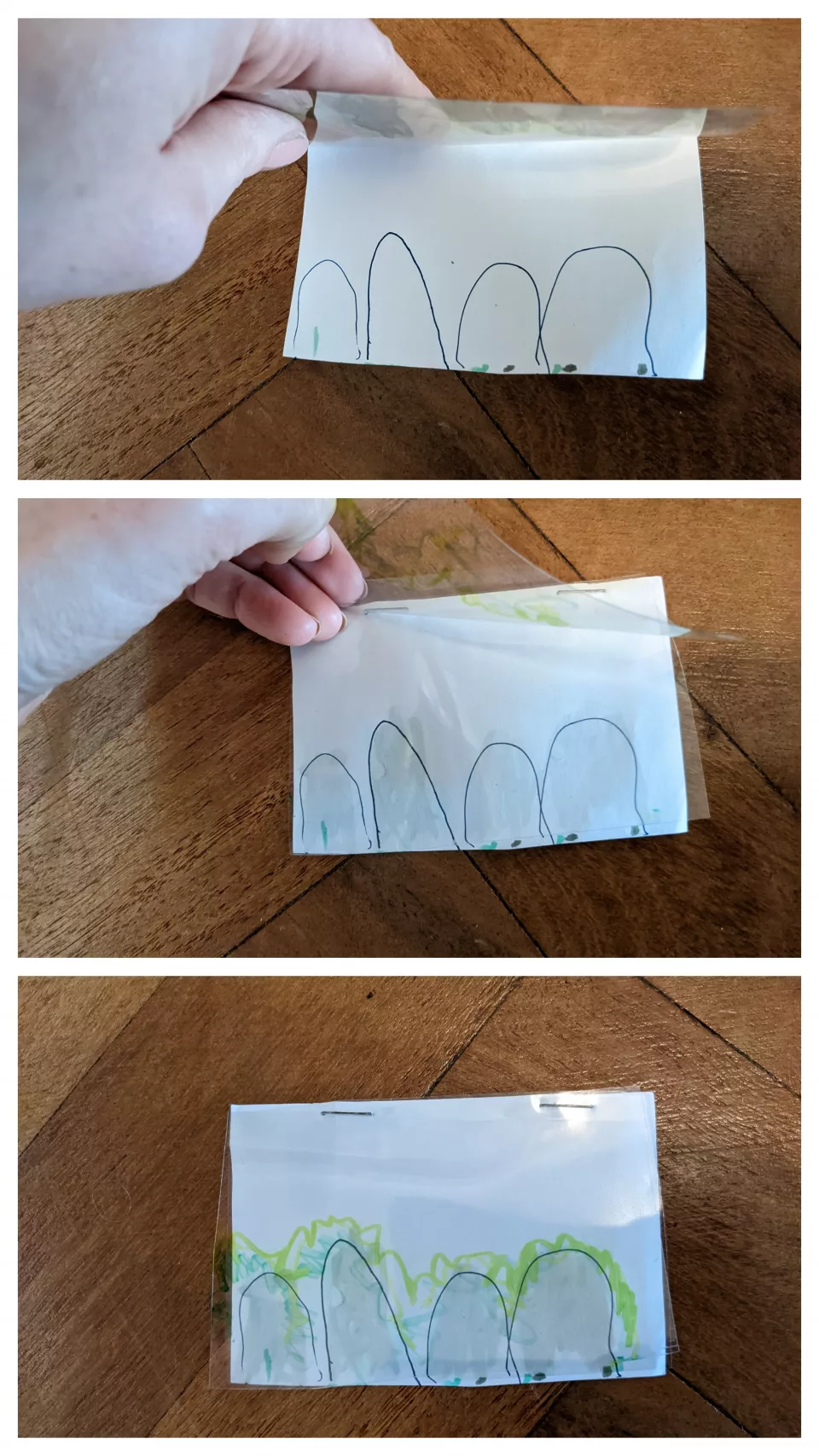
[i]https://www.ons.gov.uk/peoplepopulationandcommunity/birthsdeathsandmarriages/conceptionandfertilityrates/bulletins/childbearingforwomenbornindifferentyearsenglandandwales/2020
[ii]Much of this blog has been inspired by a podcast series on the theme of the exile through the bible, from The Bible Project.